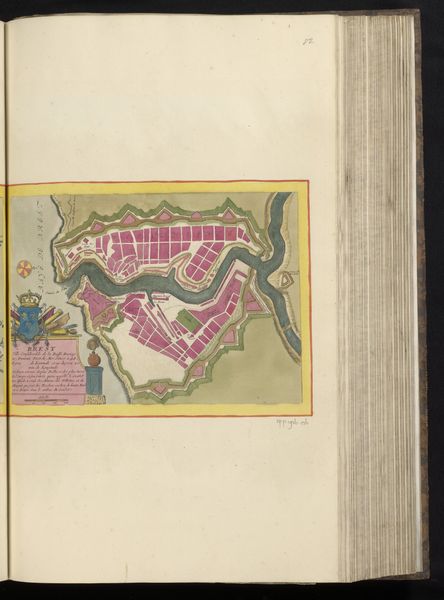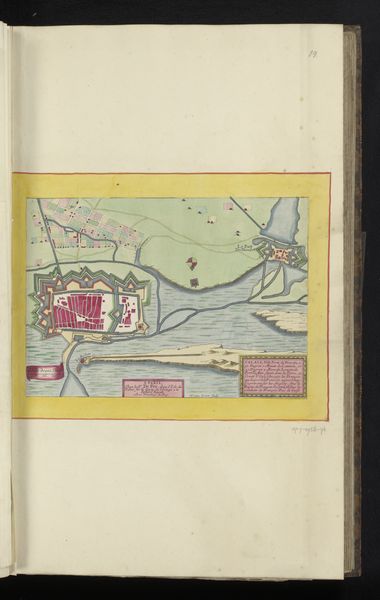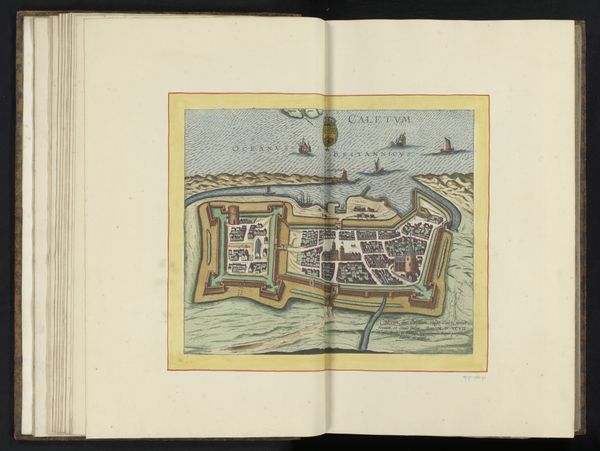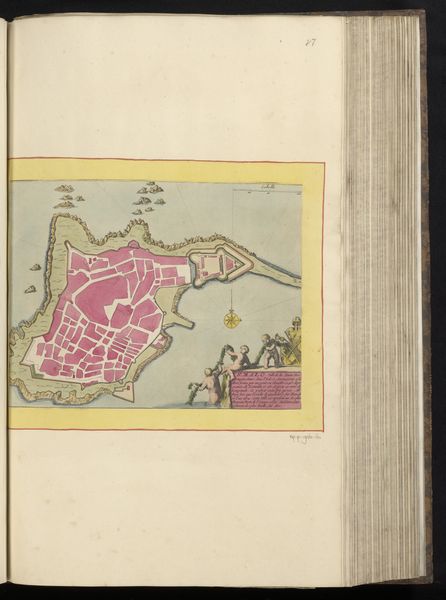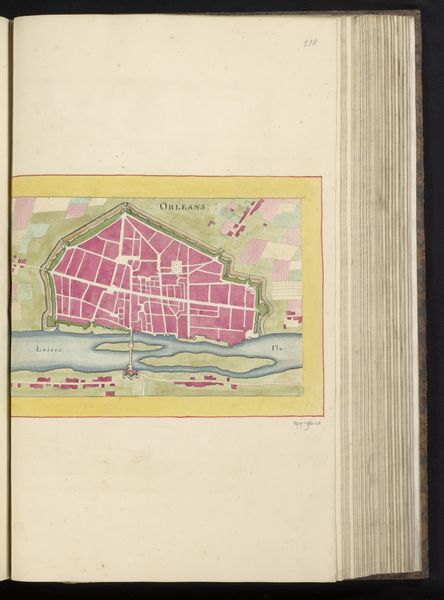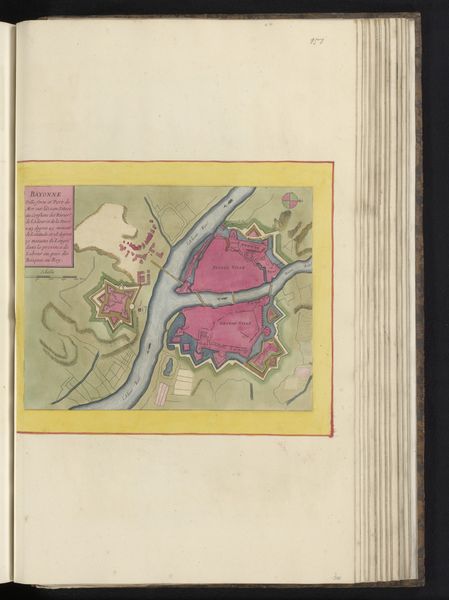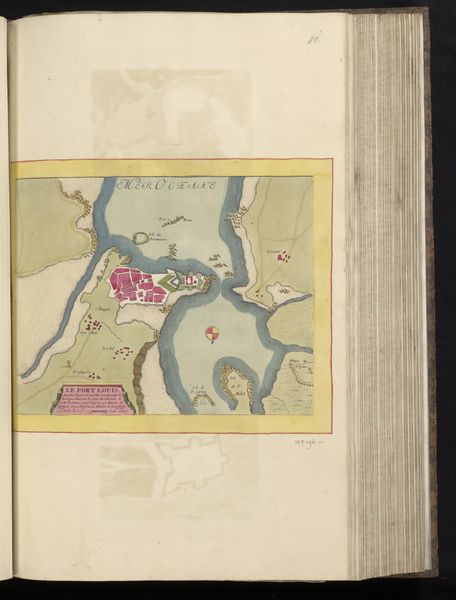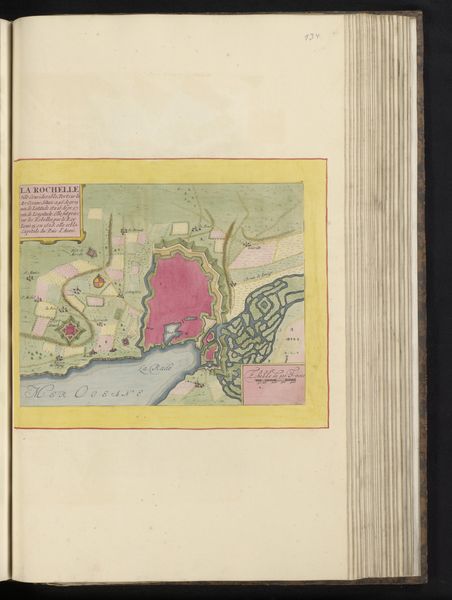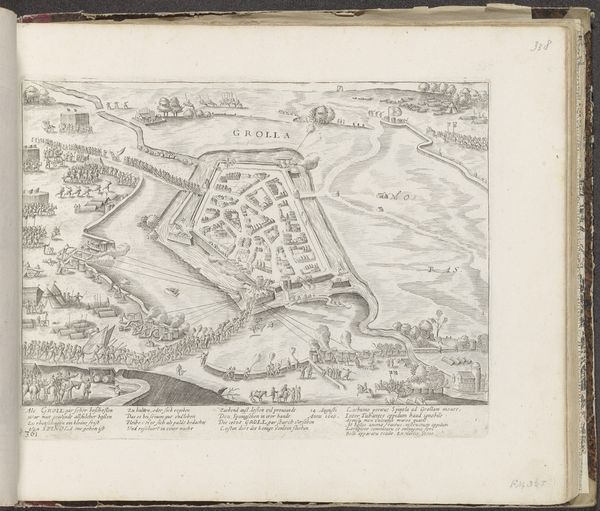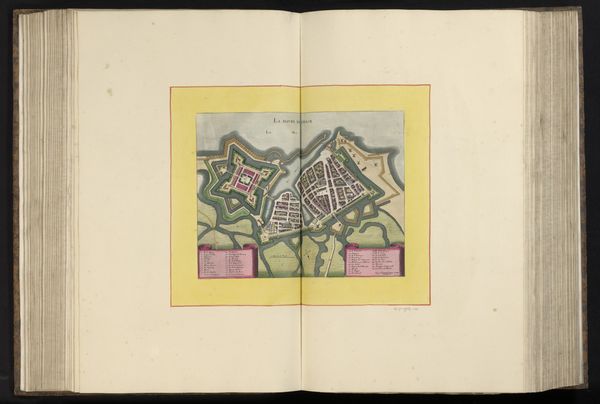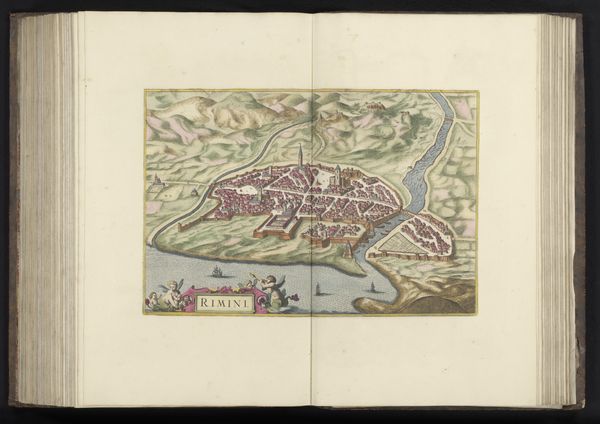
drawing, coloured-pencil, paper, watercolor, ink
#
drawing
#
coloured-pencil
#
baroque
#
paper
#
watercolor
#
ink
#
coloured pencil
#
cityscape
Dimensions: height 197 mm, width 279 mm, height 532 mm, width 318 mm
Copyright: Rijks Museum: Open Domain
Curator: Here we have an intriguing bird's-eye view—a map titled "Plattegrond van Le Havre." It's an anonymous work, dating back to somewhere between 1690 and 1700. Look closely—it's rendered in ink, watercolor, and colored pencil on paper. Editor: My immediate impression is of intricate control, the firm grip of political power rendered as gridded order. It's not the chaotic bustle of a port city, but its subjugation to...reason? Curator: Yes, these maps served as symbolic assertions of control, quite literally framing a vision of territorial power. The sharp, star-shaped fortress speaks to this. Note the radiating projections that maximize defensive lines of fire. Such strong, albeit diagrammatic, imagery of force! Editor: What fascinates me is the process: someone had to survey this, walk those streets, even conceptualize the military strategy inherent in those fortifications. What labor went into transforming material reality into such a polished representation? Consider the ink, the pigments... Curator: Beyond mere topography, such precise imagery also signifies aspirations. Color-coded architecture, almost like a game board, suggesting town planning or future visions for development. Notice the miniature tableau indicating 'HAVRE DE GRACE'! What’s your read on that piece? Editor: Another layer of crafting identity, isn't it? To create not just a military rendering, but an idealized symbol...But think about how many hands this passed through. How was this map transported, copied, consulted? Where was it created? Curator: Those are valuable material questions. The map becomes an object loaded with political and historical weight. Consider its placement here in the Rijksmuseum—it is a kind of evidence, testifying silently. Editor: Evidence indeed! To imagine this object originating as a practical item and transforming into a decorative collectible in today’s museum speaks volumes to art’s enduring journey. It really forces us to re-think artistic work’s definition over centuries. Curator: Exactly! These kinds of symbolic forms also highlight something enduring about the way humans try to impose structure. Perhaps even try to defy temporality through immortalising our marks... Editor: Perhaps. Though I see here much less transcendence and rather far more social endeavor: the collaborative labor between many hands turning earth into political imagery that has continued influence over three centuries later.
Comments
No comments
Be the first to comment and join the conversation on the ultimate creative platform.
